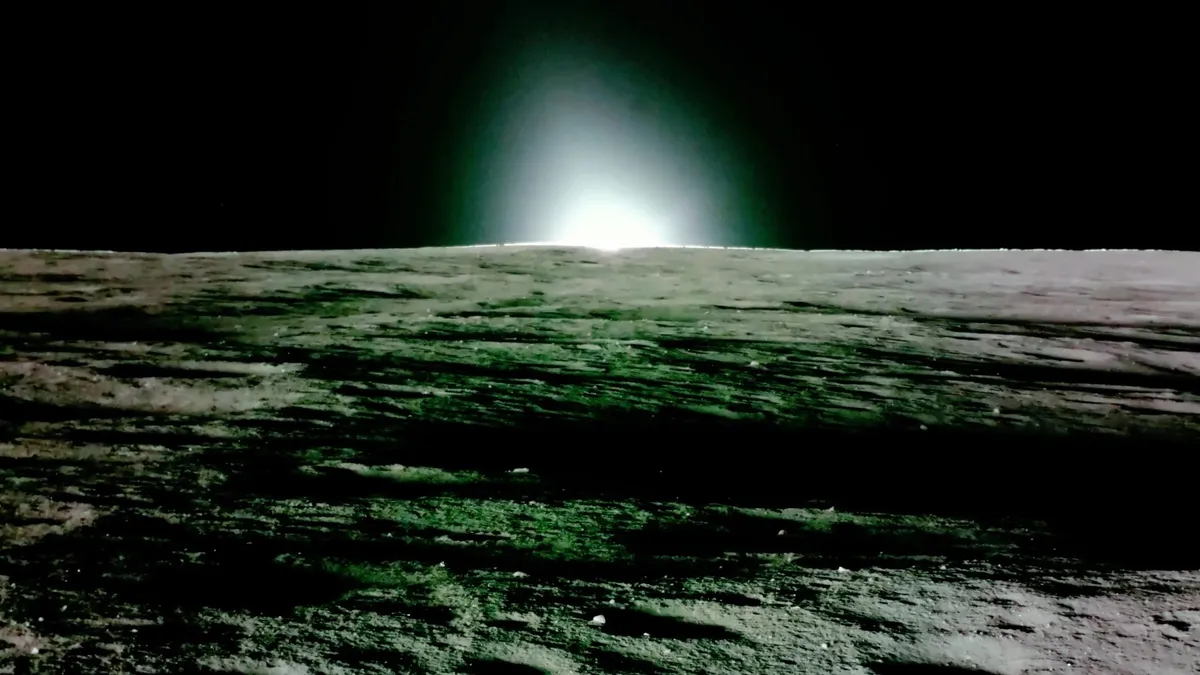
Firefly Aerospace's Blue Ghost Mission 1 has set a new standard for commercial lunar exploration, achieving unprecedented success by operating longer than any other private lunar mission. The mission, which delivered 10 NASA instruments to the Moon, has accomplished several significant milestones, including the deepest robotic thermal probe on another planetary body and the first-ever GPS tracking on the Moon. The data collected during this mission is expected to play a crucial role in the advancement of future Artemis missions and deep-space exploration.
The Blue Ghost Mission 1 successfully landed on the Moon on March 2, transporting vital NASA science and technology demonstrations. Although the mission concluded on March 16, the analysis of the data transmitted back to Earth continues, providing valuable insights for future lunar exploration initiatives. As part of NASA’s Commercial Lunar Payload Services (CLPS) initiative and the Artemis program, the mission successfully delivered its payload to the Mare Crisium basin on the Moon’s near side. Throughout its 14-day mission, which spanned the entirety of a lunar day, the lander captured stunning images and videos of a total solar eclipse and a lunar sunset. Remarkably, it continued to transmit data for several hours into the lunar night before concluding its operations.
“Witness the sunset from the Moon – Firefly’s final gift from Blue Ghost Mission 1!”
“Firefly’s Blue Ghost Mission 1 marks the longest surface duration commercial mission on the Moon to date, collecting extraordinary science data that will benefit humanity for decades to come,” said Nicky Fox, associate administrator of the Science Mission Directorate at NASA Headquarters in Washington. “With NASA’s CLPS initiative, American companies are now at the forefront of an emerging lunar economy that lights the way for the agency’s exploration goals on the Moon and beyond.”
All 10 NASA payloads successfully activated, collected data, and conducted operations on the Moon. Throughout the mission, Blue Ghost transmitted an impressive 119 gigabytes of data back to Earth, which included 51 gigabytes specifically dedicated to science and technology data. Additionally, each payload had further opportunities to carry out scientific observations and gather more data, especially during the eclipse and lunar sunset. “Operating on the Moon is complex; carrying 10 payloads, more than has ever flown on a CLPS delivery before, makes the mission that much more impressive,” noted Joel Kearns, deputy associate administrator for exploration at NASA Headquarters. “Teams are eagerly analyzing their data, and we are extremely excited for the expected scientific findings that will emerge from this mission.”
Among its many achievements, several of the NASA instruments performed first-of-their-kind science and technology demonstrations, including:
The Lunar Instrumentation for Subsurface Thermal Exploration with Rapidity achieved the status of the deepest robotic planetary subsurface thermal probe, drilling up to 3 feet and providing a groundbreaking demonstration of robotic thermal measurements at varying depths.The Lunar GNSS Receiver Experiment successfully acquired and tracked Global Navigation Satellite Systems (GNSS) signals from satellite networks such as GPS and Galileo for the first time, both en route to and on the Moon’s surface.The Radiation Tolerant Computer operated effectively in transit through Earth’s Van Allen belts and on the lunar surface, verifying solutions to mitigate radiation effects on computers, enhancing safety for future missions.The Electrodynamic Dust Shield demonstrated its capability to lift and remove lunar soil, or regolith, utilizing electrodynamic forces, offering a promising solution for dust mitigation on future lunar and interplanetary operations.The Lunar Magnetotelluric Sounder deployed five sensors to study the Moon’s interior by measuring electric and magnetic fields, allowing scientists to characterize the Moon’s interior to depths up to 700 miles, more than half the distance to the Moon’s center.The Lunar Environment Heliospheric X-ray Imager captured a series of X-ray images to analyze the interaction between the solar wind and Earth’s magnetic field, providing insights into how space weather affects our planet.The Next Generation Lunar Retroreflector successfully reflected laser light from two Lunar Laser Ranging Observatories, allowing for precise measurements of the Moon’s shape and distance from Earth, thereby expanding our understanding of the Moon’s inner structure.The Stereo Cameras for Lunar Plume-Surface Studies captured around 9,000 images during the spacecraft’s lunar descent and touchdown, providing insights into the effects of engine plumes on the lunar surface.The Lunar PlanetVac was deployed on the lander’s surface access arm, successfully collecting, transferring, and sorting lunar soil using pressurized nitrogen gas, demonstrating a low-cost, low-mass solution for future robotic sample collection.The Regolith Adherence Characterization instrument examined how lunar regolith adheres to various materials exposed to the Moon’s environment, aiding in the testing and improvement of spacecraft, spacesuits, and habitats against abrasive lunar dust.The data captured during Blue Ghost Mission 1 will benefit humanity in numerous ways, providing insights into how space weather and other cosmic forces may impact Earth. Establishing a deeper understanding of the lunar environment will significantly aid in planning for long-duration operations under the Artemis program. To date, five vendors have been awarded 11 lunar deliveries under CLPS, sending over 50 instruments to various locations on the Moon, including the lunar South Pole and the far side.